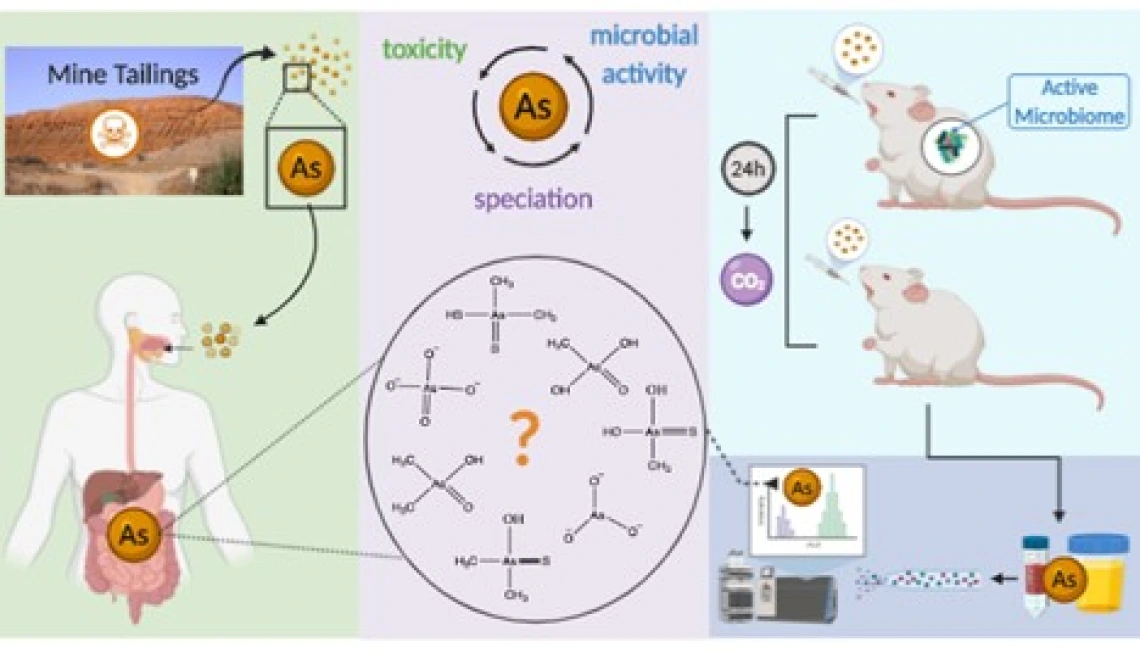Kendra Bonsey
Mentor
Dr. Jon Chorover
Department
Environmental Science
Abstract
Influence of the gut microbiome on in vivo bioavailability and transformation of particle-bound arsenic
Kendra Bonsey, Rob Root, Pawel Kiela, Jon Chorover
Arsenic (As) is a toxic and carcinogenic metalloid implicated in the development of a wide variety of diseases. Legacy mine tailings enriched in As pose a human health risk, particularly in (semi)-arid environments where tailings lack vegetative cover and are susceptible to wind dispersion, which results in inhalation and ingestion exposure to As-bearing geodusts in proximal communities. In order to accurately determine the human health risk posed by inhalation or ingestion of airborne particle-bound As, reliable site-specific bioavailability assessments for ingested As are needed. Arsenic bioavailability, which controls its relative toxicity, is dependent upon its molecular form (i.e., speciation) in the ingested material; therefore, equivalent dosages of As ingested from different environmental media may not pose equal health risk. While bioavailability measurements rely on the use of animal models, in vitro bioaccessibility assays (IVBAs) using a simple gastrointestinal (GI) fluid simulant have been shown to be a valuable predictive measure of bioavailability. However, emerging evidence indicates that the gut microbiome performs key transformations of As that impact its speciation in the GI system and, therefore, traditional abiotic IVBA may not accurately predict As bioavailability and toxicity. Our project seeks to improve GI As transformation models by performing in vivo bioavailability assays using both germ-free and intact microbiome mice exposed to particle-bound As in the form of mine tailings and As-bearing minerals. These assays will inform our understanding of the impact of the gut microbiome on As biotransformation and bioavailability. Ultimately, this information will aid in the optimization of predictive IVBA for site-specific As bioaccessibility determinations, which will improve the efficacy of human health risk assessment for mining impacted communities.



